TikTok Marketing Myths Debunked
Despite what you might hear, TikTok isn’t just a Gen-Z dominated space where cringey content meets questionable dance routines (although there is plenty of this).
TikTok is undoubtedly growing to become the world’s newest, and most impressive, marketing powerhouse.
But this isn’t always known amongst marketers.
We understand that preconceptions arise after accidentally stumbling upon a video of a 14-year-old lip syncing to a Justin Bieber’s ‘Baby’ on the safe and comfortable platforms of Instagram or Facebook.
However, these cringe-worthy videos are but a small compromise to make for the power TikTok holds in advertising.
What will we cover?
- The most common TikTok preconceptions debunked and exposed
- All the details to spice up your TikTok marketing strategy
- How to cut through the competition
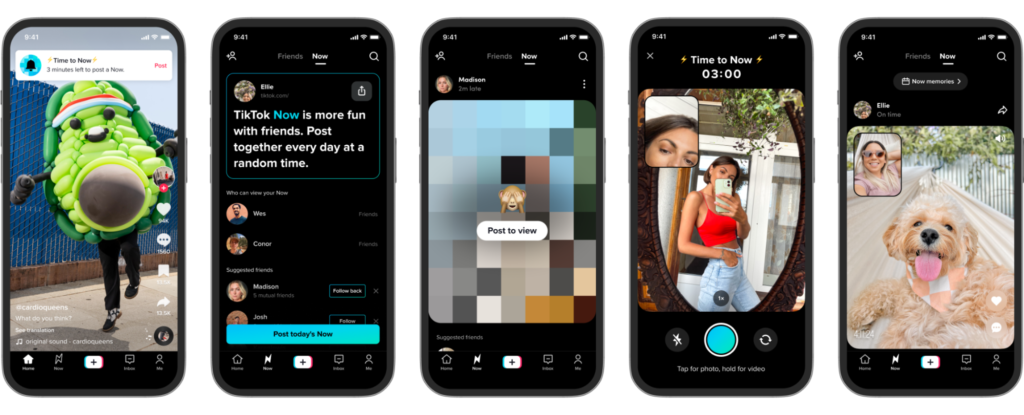
Just how big is TikTok?
TikTok has been named the world’s fastest-growing social media platform in the world, and for good reason.
With over 1 billion monthly active users and claiming the title of the most-downloaded app of the year for the third time in a row, TikTok is the marketing underdog turned top dog.
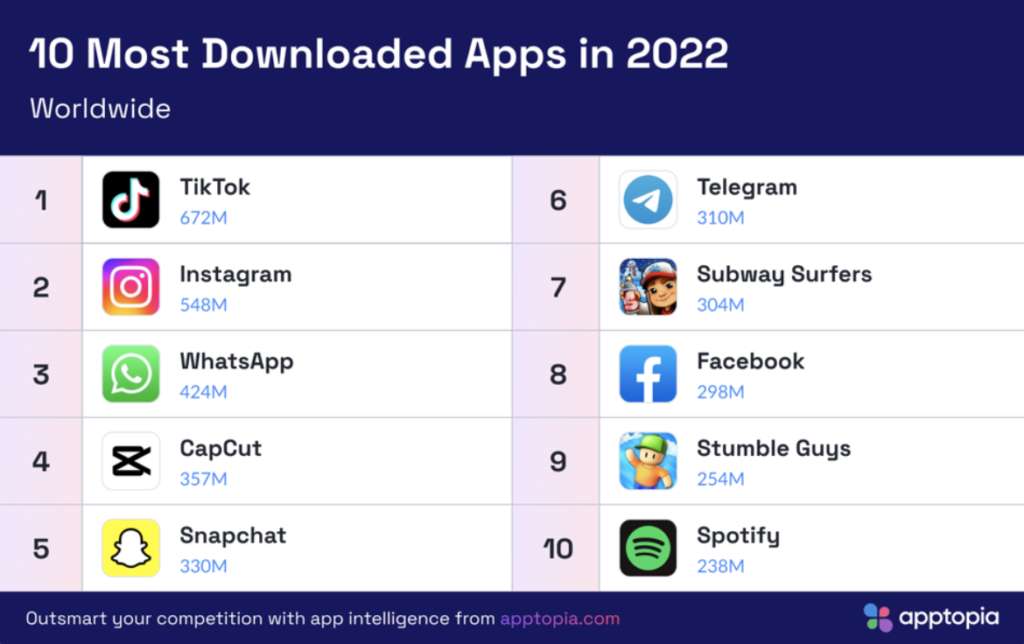
If you are looking to upgrade your marketing strategy and nail TikTok marketing trends, but are put off by the perceived barriers to success, then this blog is for you!
Myth #1: Tik Tok’s audience is too young
Brands often conclude that TikTok is only used by children, and therefore doesn’t provide the opportunity to reach anyone who sits in their target customer group. However, the age pool of the app is far wider than you assume, providing an opportunity to effectively reach customers at all stages of life.
While TikTok is highly adored among the Gen-Z demographic (as they are typically early adopters of such platforms), to regard the app as only for these users would deprive your business of tremendous opportunity.
Users aged 30 and over represent a whopping 52% of TikTok’s audiences, indicating that TikTok’s audience is quickly “growing up”.
A massive 18% of global internet users between the ages of 16–64 use the TikTok app, and with numbers only expected to rise, the potential to reach your target customers is absolutely huge.
Plus, with 37% of users displaying an annual income of over $100,000, TikTok provides a very real opportunity to see tangible results in your return-on-investment, sales, click-through-rate, website visits, authentic reviews and overall brand awareness. It’s a win-win scenario.
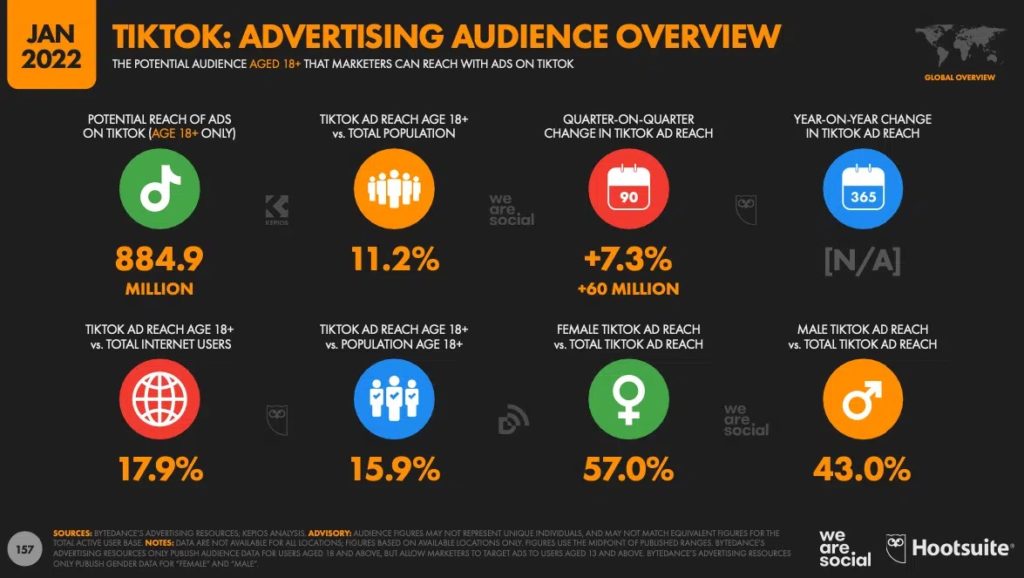
Myth #2: TikTok videos are too short to effectively engage audiences
8, 7, 6, 5, 4, 3, 2, 1 — that’s all it takes before your customer loses interest and keeps scrolling.
The human attention span has declined to 8 seconds in recent years (which surprised us here at The Garden, we thought it might be even less), providing marketers with less time to capture and connect with their audience.

Luckily for TikTok, as the self-proclaimed ‘destination for short-form mobile videos,’ users are provided with a unique experience where engagement soars above traditional long-form video.
The average TikTok video is 21 to 34 seconds long, creating enough time for users to engage and connect within 8 seconds, and enough additional time to convey key messages to interested audiences.
If you believe that social media users are still spending most of their screen time scrolling on Facebook, I’m afraid to say your opinion is outdated! TikTok outperforms Facebook with an average of 95 minutes spent on the app per day, compared to Facebook’s average of 58 minutes per day — a time that seems to be decreasing.
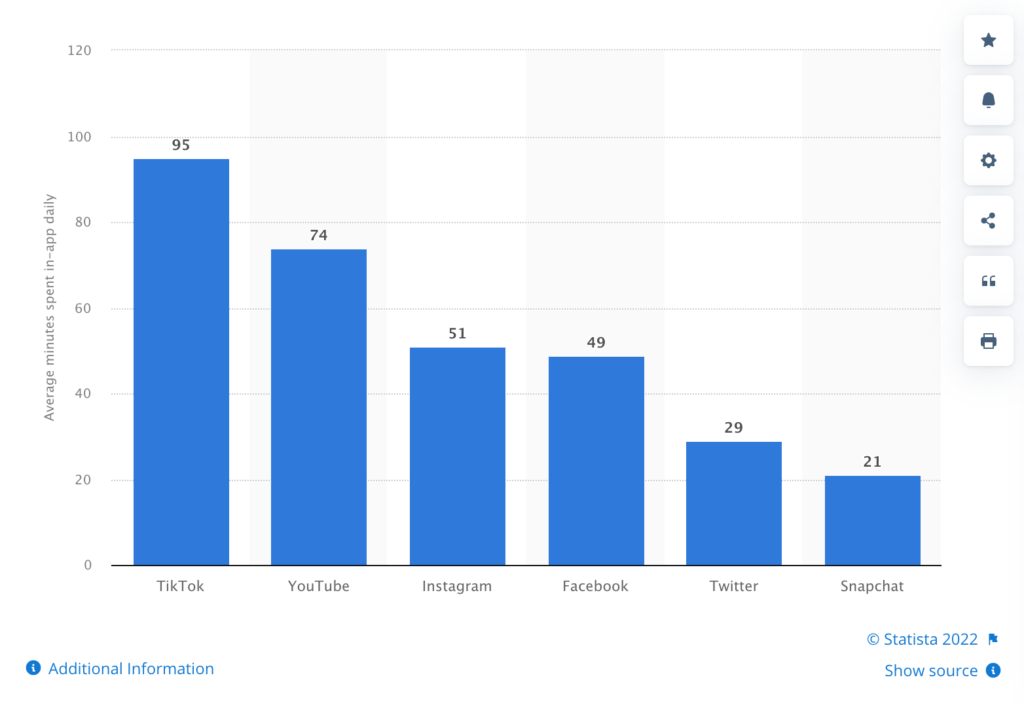
So, is TikTok an effective marketing tool despite its short nature? Certainly! In fact, its short nature is what characterises the success of the app.
Myth #3: People won’t spend money on an app like TikTok
If filming poorly choreographed dance routines isn’t people’s favourite thing to do on the app, spending truck loads of cash certainly is.
TikTok is the no.1 app for consumer spend, with the amount of money spent increasing by a huge 77% in the single year of 2021.
2022 saw a total spend of $2.3 billion, compared to $1.3 billion the year before!
Quick maths tells of an exponential increase of $1bn in one year and according to the below spend graph, this growth rate has the potential to see huge additional increases.
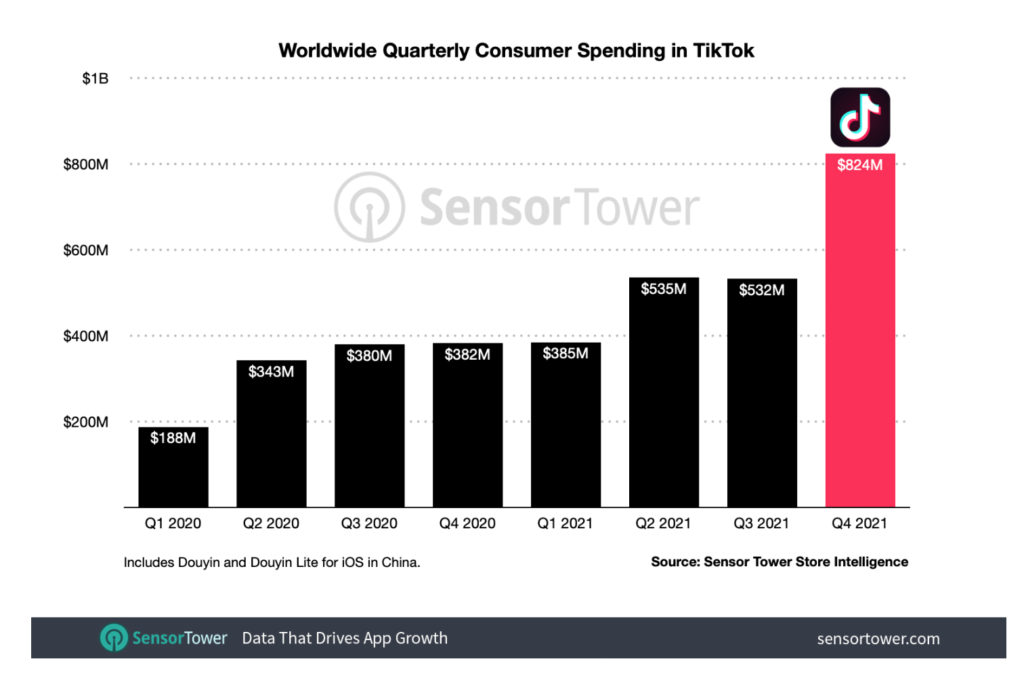
The authentic nature and leaned-in community the app creates allows 67% of TikTok users to feel that the platform inspires them to shop, even if they weren’t planning on doing so. Users love seeing genuine product reviews, with 73% of users report feeling a deeper connection to the brands they see on TikTok – meaning clean cut advertising is going kaput.
Instagram and Facebook hashtags have nothing on TikTok, with #TikTokMadeMeBuyIt accumulating over 7.4 billion views in 2021. A huge 37% of TikTok users have found a product on the app and immediately wanted to buy it, with 29% attempting to buy something to find that it is already sold out – a perfect example of the power of TikTok marketing trends.
TikTok also announced a partnership with Shopify in 2021, ensuring that the platform is a one-stop-shop for TikTok campaigns. This makes it easier for businesses to tap into the marketing power of the app in not only gaining awareness, but moving customers through the entire purchase process within the space of seconds – not always an easy feat.
So if you’re looking into creating a 2023 TikTok marketing strategy but aren’t convinced it can bring in revenue, we’re here to say it certainly can.
Myth #4: You need a lot of followers to get views on TikTok
TikTok is unlike any other social media platform – you don’t need followers to reach a huge number of people and make an impact.
However, gaining TikTok views isn’t a walk in the park. The app’s algorithm ensures that anyone can go viral, rewarding quality content whether it’s made by popular creators or first-time users. While this means a small brand has the potential to reach big-brand audiences, it also requires an understanding of how the algorithm values and distributes content, as well as current and emerging TikTok trends.
All videos get the opportunity to be seen on the For You Page where, depending on its performance, it may get boosted to a larger audience. If TikTok deems your video entertaining and relevant for viewers, your video could go viral.

To give your video a very real chance at reaching thousands, ensure your video is captivating, and provides the audience with some type of value (humour, inspiration or learning something new) – it’s all about making an immediate impression.
Myth #5: You need to be a funny or silly brand to gain traction on TikTok
TikTok favours authenticity and relatability above all else, whether you consider yourself the funniest brand in the world, or if you sell canned vegetables.
The algorithm has nothing to do with the nature of your brand and everything to do with the quality of your content, and it doesn’t discriminate when it comes to where this content comes from.
The perfect Tiktok marketing example involves The Washington Post – a well respected newspaper dedicated to informing readers about the biggest in world news. Typically expected to harbour a rather serious tone, their downright goofy presence on Tiktok has found huge success for the brand.
Although they do link a daily news article on their TikTok page for those who really are interested in the news, their entertainment-driven approach to content has seen them go from strength to strength.
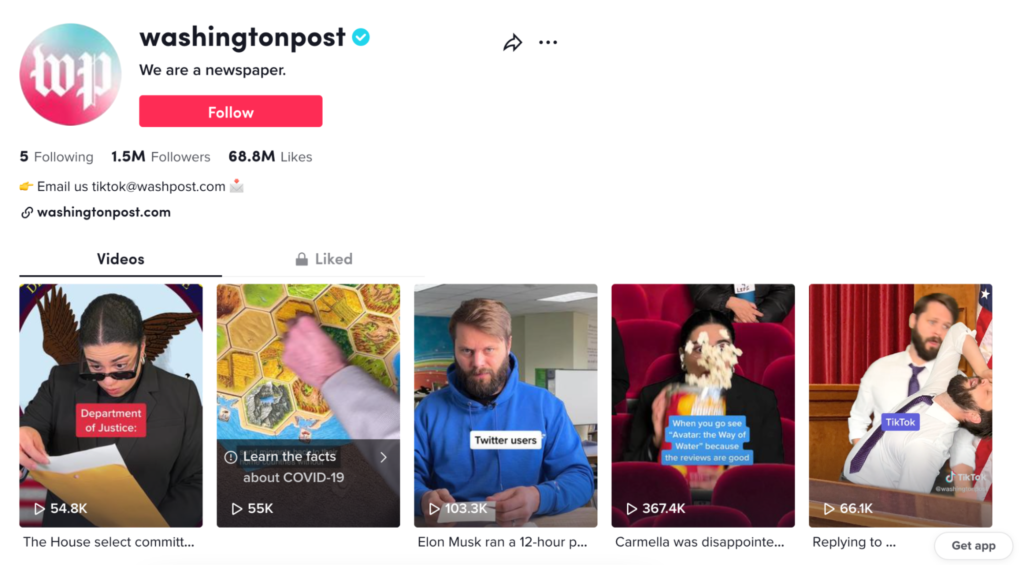
The Washington Post is the exemplar of what stepping out of your marketing strategy comfort zone can do, with 1.5M active followers and 68.8M video views.
Their expert Tiktok marketing strategy targets Gen Zers who aren’t the biggest consumers of news, and transforms this cohort into a group that trusts and respects their brand through a platform that wouldn’t typically be associated with the Washington Post. This is a stellar example of digital marketing!
Myth #6: You need to buy expensive filming equipment and have a videographer for TikTok
Sure, TikTok requires filming and some editing, but they’ve made the process of video-making absolutely fool-proof (otherwise how would the fools make their videos?) by enabling you to do most of the heavy lifting within the app.
As you know by now, TikTok rewards authentic and relatable content, and what is so relatable about using a high-tech camera and skillful edits? Not much.
The only camera you’ll be needing for your TikTok marketing strategy in 2023 is the one on the back of your phone (hear hear!).

As for the need for a videographer, while it can be handy to have a creative on the team to direct shots and angles, anyone with access to a phone and an inventive mind can nail TikToK marketing.
No More Excuses
The world is moving too quickly to fall behind the curve – especially a curve with as much potential as TikTok.
It’s not too late, TikTok still has much more of the digital world to dominate – there’s no better time to optimise your 2023 TikTok marketing strategy than right now!
So with all of this in mind, is TikTok the future of marketing? Abso-freakin-lutely.
